The Ultimate Guide to Keto Diet: Plan for Success
Intro to Keto
Welcome to the ultimate guide to the Keto Diet, your gateway to achieving success and improving your health. In this consolidated informational guide, we explore the fundamentals of the Keto Diet, its benefits, and provide you with practical tips to make your journey a breeze.
So, what is the Keto Diet?
The Keto Diet, short for the ketogenic diet, is a low-carbohydrate, high-fat plan that has gained immense popularity in recent years. It focuses on drastically reducing your carb intake and replacing it with healthy fats. By doing so, your body enters a metabolic state known as ketosis, where it efficiently burns fat for fuel. It’s important to note that Ketosis is a natural metabolic state your body undergoes when your carbs intake is well below the energy needs of your activity level.
How Does the Keto Diet Work?
Normally, your body primarily relies on carbohydrates for energy. However, when you restrict carbohydrates, your liver starts producing ketones from stored fat, which become the main energy source for your body. This shift in fuel utilization can result in substantial weight loss and other health benefits.
The ketogenic diet is not for everyone. Keto diet is not well suited for pregnant women, children without epilepsy, people with certain types of cancer, people with heart disease, and high-performing athletes.
Benefits of the Keto Diet
Weight loss is the most noticeable benefit for the Keto diet. U.S. News ranked the Keto Diet as “Best for Fast Weight-Loss”. A U.S. News panel of experts comprised of nutritionists and medical specialists in heart health, diabetes, human behavior and weight loss ranked keto atop multiple popular Diets.
However, the Keto Diet offers a wide range of benefits beyond weight loss. By following a ketogenic lifestyle, you may experience increased mental clarity, improved energy levels, better control over blood sugar levels, reduced inflammation, and enhanced insulin sensitivity. Keto is one of the oldest forms of medical treatment for epilepsy, and doctors usually recommend the ketogenic diet for children whose seizures have not responded to several different seizure medicines.
Good Fats and
Protien Sources
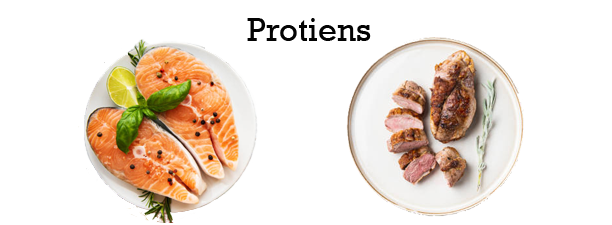

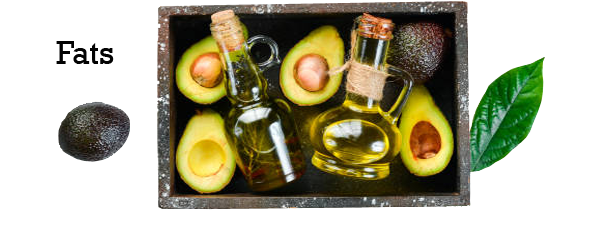



Getting Started with Your Keto Diet
The Building Blocks of a Keto Plan
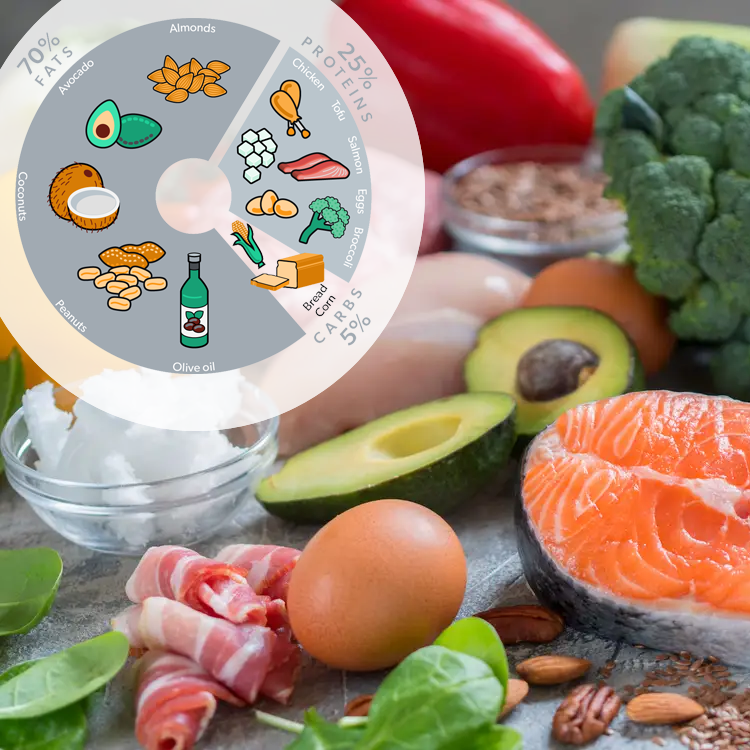
Macronutrient Ratios
Before embarking on your Keto journey, it's essential to understand the macronutrient ratios, how to calculate your daily macros, and to familiarize yourself with suitable food choices.
On the Keto Diet, the macronutrient ratios typically involve consuming approximately 70-75% of your daily calories from fats, 20-25% from proteins, and (drumroll please) only 5-10% from carbohydrates. These ratios help your body enter ketosis and stay in a fat-burning state. This is why a good Plan is crucial.
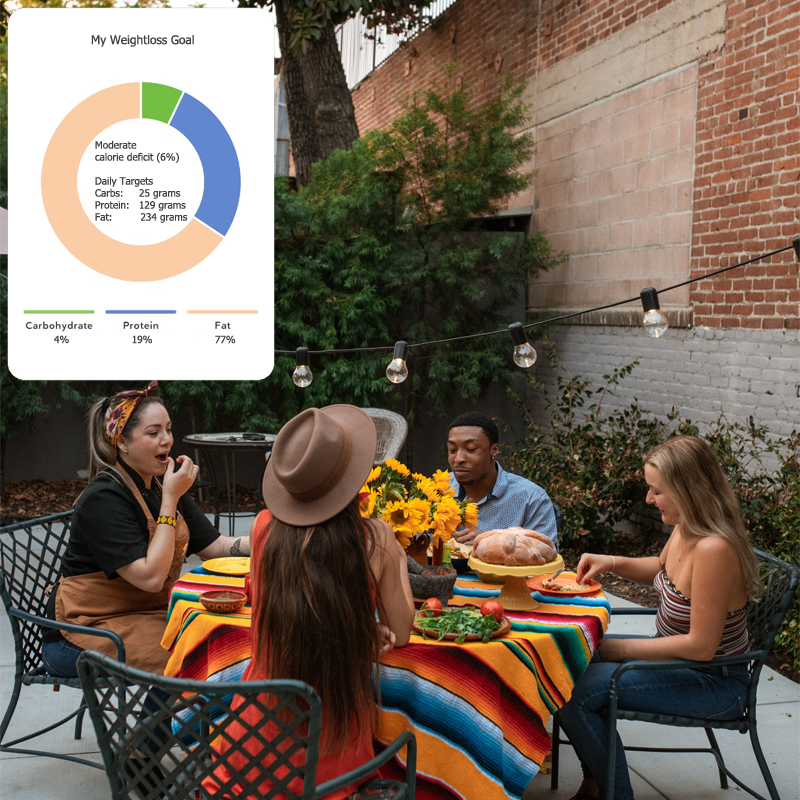
Daily Macros
Calculating your macro ratio target should be based on your circumstances and goals. To personalize your macro target, you can use online calculators that consider factors such as your weight, height, activity level, and goals.
Tracking your daily food consumption macros diligently ensures you maintain the desired state of ketosis. Meal plans with macro info makes it easier to achieve success.
Calculating and tracking your macros take time, but must be a part of a good Plan. But don’t despair, there’s an App for that!
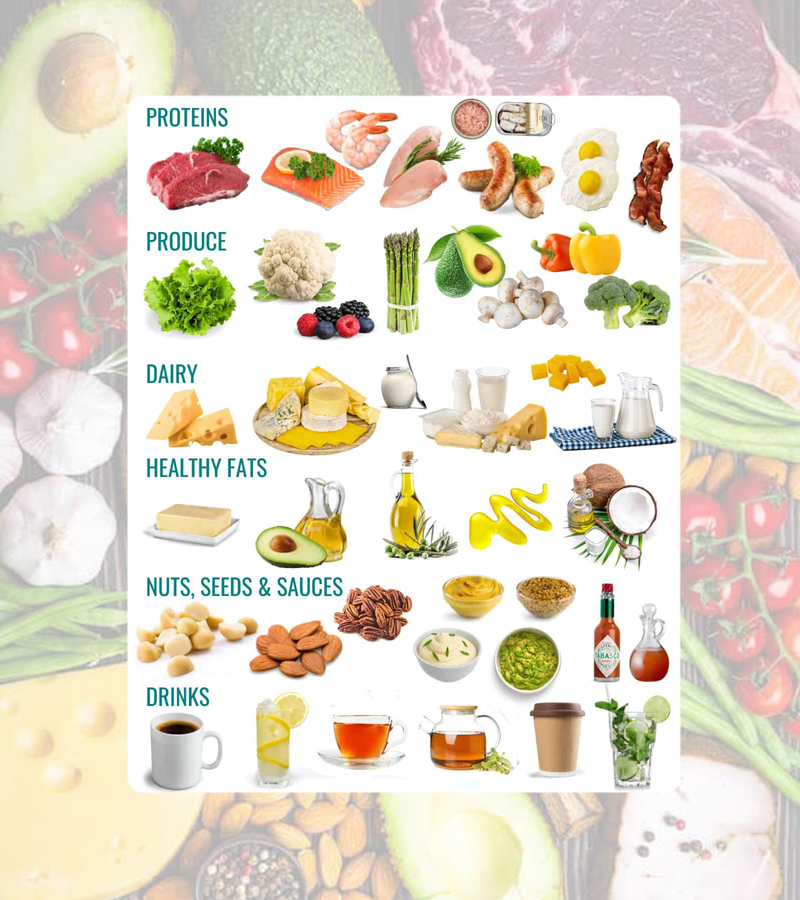
Foods to Include and Avoid on your Menu
Keto-friendly foods include healthy fats like avocado, coconut oil, and olive oil, as well as high-quality protein sources such as eggs, poultry, and seafood. Non-starchy vegetables like spinach, broccoli, and cauliflower are also excellent choices.
Meanwhile, you should avoid high-carb foods such as grains, sugar, processed snacks, and sugary fruits. As a guide, remember starchy foods are a primary source of carbohydrates.
Essential Tips for Success

Meal Planning and Preparation
While the Keto Diet can be highly effective, it requires careful planning and adherence to certain principles to achieve the best results.
Creating a Weekly Meal Plan: Plan your meals ahead of time, including breakfast, lunch, dinner, desserts and snacks. This will ensure you have keto-friendly options readily available and prevent impulsive food choices.
Don't forget the Temptations: If you are like most of us (including Oprah), Breads and Desserts will most likely play an important role in keeping you engaged and sticking to your plan. Finding low-carb alternatives is crucial for staying on track.
Preparing Keto-Friendly Snacks: Keep a selection of keto snacks on hand, such as nuts, seeds, cheese, and low-carb protein bars. These convenient options will help you stay on track when hunger strikes between meals.
Hydration and Electrolyte Balance
Importance of Hydration on Keto: Drink plenty of water throughout the day to stay hydrated. Keto can have a diuretic effect, so it's crucial to replenish fluids regularly. As an added bonus, milk is more hydrating than water and is another great option for hydration on Keto.
Balancing Electrolytes: As you reduce carbohydrates, your body excretes more electrolytes. Ensure you consume adequate amounts of sodium, potassium, and magnesium through food or supplements to maintain proper electrolyte balance.
Overcoming Keto Flu
Common Symptoms and Remedies: The transition to a keto diet can sometimes cause flu-like symptoms, known as the keto flu. Headaches, fatigue, and muscle cramps are common, but temporary. Increasing electrolyte intake, staying hydrated, and gradually transitioning to keto can help alleviate these symptoms.
Gradual Transition and Patience: Consider easing into the keto diet by gradually reducing your carbohydrate intake over a few weeks. This allows your body to adjust more smoothly, minimizing the likelihood of experiencing the keto flu.
Maximizing Weight Loss on Keto
If your primary goal is weight loss, you can implement additional strategies to optimize your results while following the Keto Diet.

Incorporating Intermittent Fasting
Benefits of Intermittent Fasting on Keto: Intermittent fasting involves cycling between periods of eating and fasting each day or week. Combining intermittent fasting with the keto diet can enhance fat-burning capabilities, improve insulin sensitivity, and accelerate weight loss.
Different Fasting Options: Popular intermittent fasting methods include the 16/8 method (fasting for 16 hours and eating within an 8-hour window), the 5:2 diet (eating for 5 days and fasting for 2 days), and alternate-day fasting.

Exercise Strategies
Importance of Exercise on Keto: Regular physical activity complements the Keto Diet by boosting your metabolism, promoting lean muscle mass, and enhancing overall well-being. Regular exercise is key for Fat Burning, helps maintain weight loss and supports long-term weight management.
Recommended Workouts for Fat Burning: Incorporate a combination of cardiovascular exercises, such as brisk walking, cycling, or swimming, with strength training to maximize fat burning and muscle tone.

Putting Them Together Effectively
High-intensity interval training (HIIT) workouts are particularly effective for improving fitness levels and accelerating weight loss; however, you should avoid strenuous activities on fasting days. On fasting days, light exercise such as yoga may be more beneficial. There are many ways to do intermittent fasting. Experiment with different approaches to find what works best for your lifestyles.
Intermittent fasting is safe for many people, but it's not suitable if you're pregnant, diabetic or have other medical issues. Consult your doctor before starting intermittent fasting.
Maintaining the Keto Lifestyle

Learn From Others
Based on multiple surveys and user feedback, the single most important factor to success in maintaining a Keto diet starts with a Plan. Time and again, most of those who fail to maintain a Keto diet, or achieve reasonable goals, did not have a plan.
To ensure long-term success and make the Keto Diet a sustainable lifestyle choice, start with a clear plan and consider the following additional tips.
Socializing on Keto in fine Keto-style
Know Your Daily Target Macro: Compile a meal plan, that aligns with your target macro, for the first month and socialize it with supporters. This strategy will help you maintain compliance with your plan when away from the comforts of home.
Navigating Restaurant Menus: Look for keto-friendly options when dining out. Focus on protein-rich dishes, choose salads with low-carb dressings, and ask for substitutions or modifications to suit your dietary needs.
Smart Choices for Keto-Friendly Social Events: Prepare ahead of time by bringing keto-friendly dishes to potlucks or gatherings. This ensures you have nutritious options available and reduces the temptation to indulge in high-carb treats.
Long-Term Health Considerations
The ketogenic diet is not for everyone. Keto diet is not well suited for pregnant women, children without epilepsy, people with certain types of cancer, people with heart disease, and high-performing athletes. The metabolic needs of these groups are such that they do not align well with the macronutrient distribution of the ketogenic diet.
Monitoring Cholesterol Levels: Look for keto-friendly options when dining out. Focus on protein-rich dishes, choose salads with low-carb dressings, and ask for substitutions or modifications to suit your dietary needs.
Ensuring Sufficient Micronutrient Intake: Look for keto-friendly options when dining out. Focus on protein-rich dishes, choose salads with low-carb dressings, and ask for substitutions or modifications to suit your dietary needs.
Prefer Plants: Eating more animal protein and animal fats generates more dietary acid in the blood, which could lead to Acidosis. Acidosis increases the risk of developing kidney stones and loss of bone density. Plant-based proteins and fats should be your preferred choice. A plant-based diet with whole foods and lower sodium is associated with a significant reduction in dietary acid. Supplements such as potassium can also help neutralize excess acid.
Conclusion
Keto diet is effective for weight management. Multiple surveys has demonstrated this success, but it's not for everyone.
Start with a Plan
For those starting a ketogenic diet journey, remember it is crucial that you start with a Plan. Stay consistent, be active, and listen to your body's cues along the way. Embarking on a Keto journey can be transformative for your health and weight management goals.
Personalize
By understanding the basics, personalizing your Plan, and maximizing your efforts, you can enjoy the numerous benefits of this low-carb, high-fat lifestyle. Personalizing your plan means calculating your individualized Macro Ratios, setting your goals, and using these datapoints to derive your daily consumption targets. A Keto Macro Calculator is crucial in deriving this information.


About Us
Our mission is to distill the vast array of materials on the subject out there, and to make it easier for the average consumer to make informed choices on their path to eating healthier. In addition, we try to make it convenient to find helpful resources that could help you reach and maintain your goals. We will continue to update these materials periodically, in an attempt to stay current, as we learn from each other’s experiences.
Disclosure: We participate in affiliate programs and accept monetary compensation through advertising, affiliate links and sponsored collaborations with various brands. Making purchases by clicking affiliate links from this page could generate a commission. Using the affiliate links from this website helps in supporting the work we do in maintaining this site, staying current, and bringing information to our readers at no cost.
Note, prices and special offers are provided to us by our partners, are dynamic and subject to change at any time without prior notice. Not all links on this page are affiliate links, and some are used to reference key materials on other independent websites. Our aim is to make it easier for the average consumer to make informed choices.
Disclaimer: The information provided in this article is for informational purposes only and should not be considered as legal or medical advice. Please consult with a healthcare professional or registered dietitian before making any significant changes to your diet or lifestyle.
Get your plan now
Help support our work | Affiliate offers | See Disclosure Above
This 28-Day Meal Plan will lead you every step of the way. You wouldn't have to figure things out on your own!
A 28-Day Meal Plan with convenient recipe ideas for your Instant Pot. Most recipes take just 10 minutes prep and about 30 minutes to cook.
Hear what others are saying about Keto
Feedback from real participants and experts alike.
Not long ago, we surveyed thousands of readers about their experiences on keto…
But the most common point of failure is that these people did not have a plan!
While I set out to lose 10 pounds, I quickly surpassed my goal. I lost 10 pounds within three weeks and hit 15 pounds two days before the wedding.
While on the keto diet, I had so much energy, and I didn't experience the typical mid-afternoon energy slumps.
FAQs
Disclaimer: The information provided in this article is for informational purposes only and should not be considered as medical advice. Please consult with a healthcare professional or registered dietitian before making any significant changes to your diet or lifestyle.
One common misconception is that the Keto Diet promotes an unlimited consumption of unhealthy fats. However, it's essential to focus on healthy fat sources like avocados, nuts, and olive oil. Another misconception is that the Keto Diet is a short-term, quick-fix solution. It is more effective as a long-term lifestyle change for sustainable results.
The time it takes to enter ketosis varies from person to person. Typically, it can take anywhere from two to seven days of strict carbohydrate restriction to achieve ketosis. Factors such as individual metabolism, activity level, and adherence to the diet influence the timeframe. Patience and consistency are key during this initial phase of adaptation.
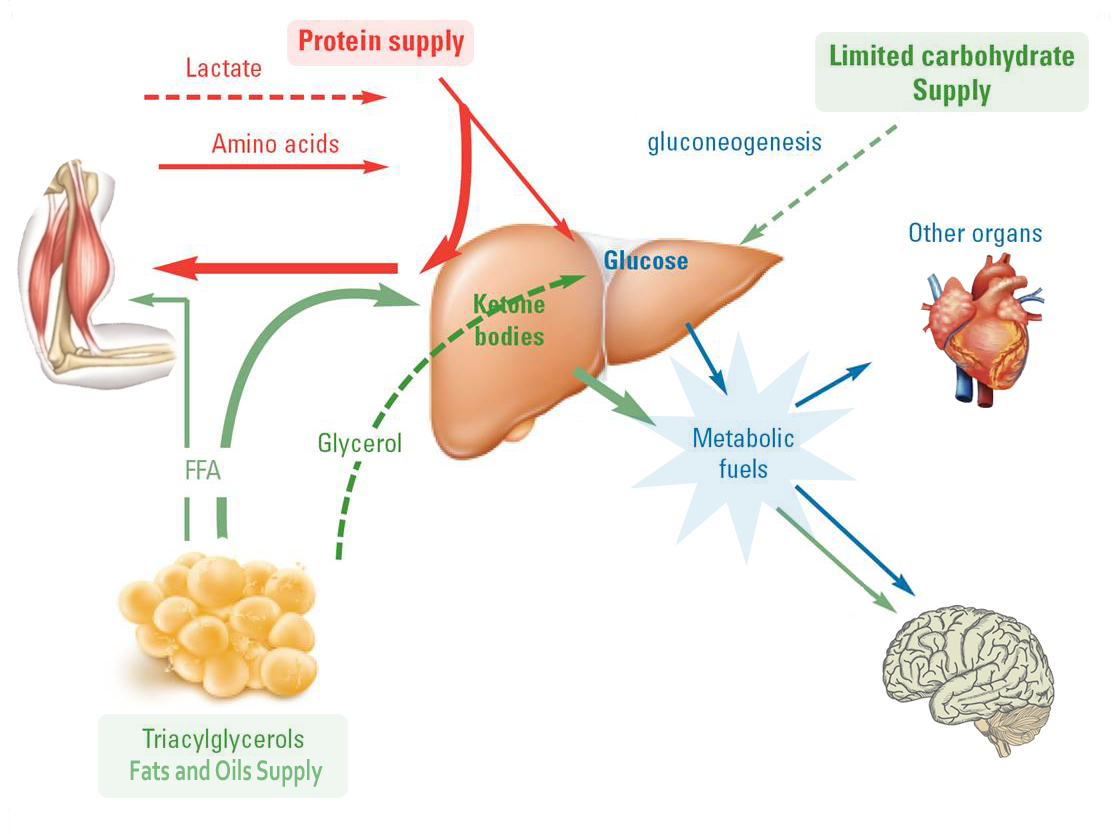
A typical ketogenic diet might be structured with 70% fat, 25% protein, and 5% carbohydrates (much less carbs than a typical carb-rich diet). While the body is in ketosis, it utilizes fatty acids as an alternative source of energy due to the significantly reduced amounts of available glucose. Triacylglycerols are the main components of animal fat (including humans) and vegetable oils. The Triacylglycerols from the oils and fats are the primary sources of Free Fatty Acids (FFA) which are a key energy source. The Fatty Acids are broken down into acetyl coenzyme-A (CoA) by a cellular-level process called Fatty acid oxidation.
To produce usable energy, acetyl coenzyme A (CoA) is converted by the liver into acetoacetate and 3-hydroxybutyrate, also known as ketone bodies. These ketone bodies are now free to flow where needed and are used as fuel for metabolic processes, instead of glucose from carbs. It is important to note that ketone bodies are very effective respiratory fuels; compare 100 g of glucose which generates 8.7 kg of usable energy (Adenosine Triphosphate - ATP), to 100 g of 3-hydroxybutyrate which yields 10.5 kg of ATP, and to 100 g of acetoacetate which yields 9.4 kg of ATP. Most areas of the body, including the muscles and the brain, will use ketones whenever provided to them. However, there are still some metabolic processes that favor glucose for fuels. In these cases, glucose is supplied by hepatic gluconegenesis, where the liver converts non-carbohydrate sources (such as fatty acids and amino acids) into glucose.
While occasional indulgences may be tempting, it's generally recommended to maintain consistency with the Keto Diet for optimal results. Frequent cheat days or meals can disrupt ketosis and hinder your progress. However, if you do decide to have a cheat meal, be mindful of portion sizes and aim to get back on track promptly.
The Keto Diet is generally safe for most healthy individuals. However, if you have pre-existing medical conditions, such as diabetes, kidney disease, or gallbladder issues, it's crucial to consult with a healthcare professional before starting the Keto Diet. They can provide personalized advice and ensure it aligns with your specific health needs.
Alcoholic beverages can be consumed in moderation while on the Keto Diet, but it's important to choose low-carb options. Avoid sugary mixed drinks, beer, and sweet wines. Instead, opt for spirits like vodka, whiskey, or tequila, and pair them with sugar-free mixers or soda water.
Reference materials to other Keto diet resources and websites:
Don't miss out on this opportunity to maximize your potential
Plan your macro target | Do track daily macros | Check your results | Act to maintain




